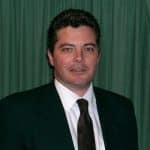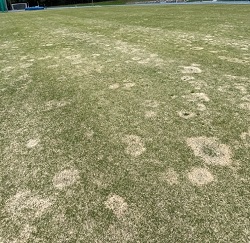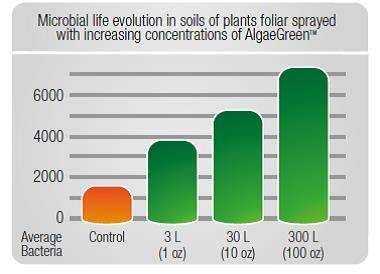The Case against the Preventative Use of Turf Fungicides.
Case 1: I am a heavy smoker, I smoke 20 cigarettes a day and weigh over 120kg with a BMI of 38. I don’t do any exercise. My favourite food is burgers and fries. As I am in the high-risk bracket for cardiovascular disease and cancer. I take anti-cancer drugs regularly and also take medication to reduce my blood pressure.
Case 2: I do not smoke. I exercise regularly and eat a balanced diet. My BMI is 19.5.
Which of the above is a sensible health approach, and how does this relate to the turf industry and in particular disease management?
There are no prizes if you guess that Case 2 is the answer. This gives you more of a chance of a longer life with a reduced likelihood of disease and its associated complications.
A recent article stated – ‘Most of us believe that we outperform our great-grandparents in terms of longevity. This is because we have supposedly added another decade of life expectancy to the average age of passing, but this may not be the case.
This extra decade that we are “enjoy” invariably involves a variety of care and pharmaceuticals to keep us going, and if “health is happiness” then we may not be doing as well as we are told. If we look at the number of centenarians per 100,000 people, there were more people that achieved this ripe old age in 1900 than there are today.
Turf Fungicides: Prevention vs Cure.
The turf industry has the approach of ‘’prevention is better than cure’’. This appears has been driven by a combination of chemical manufacturers and suppliers. There are two issues with this.
- Would you pump antibiotics or other medications into your system on the off chance that you might get an infection?
There are plenty of excellent predictive models or tools to identify turf disease without having to plaster chemicals around. Failing this there are plenty of turf chemicals that have a rapid knockdown of turf disease without the need to preventatively spray. In recent years there has even been a movement towards long lasting curative and preventative fungicides such as Lexicon Intrinsic.
- If prevention is better than cure surely the starting point for this is the health and nutrition of the plant. This must be better than a blind reliance on turf fungicides?
In the same way, a balanced diet reduces the chances of disease, if you feed your turf properly it will do likewise. The turf industry appears to have forgotten this. This is due to chemical companies (in the same way as pharmaceutical companies do) drumming into us that this is the sensible approach to take regardless of any potential side effects.
Non-Target Effects.
So what are the side effects? Many turf fungicides have unwanted (non-target) impacts that lead to other issues developing. For example, the effects on beneficial organisms or an unexpected PGR effect.
In a 2013 article by Harold Winter, he states…’’ Illness does not occur with 100% certainty, but instead with some probability’’… and this holds true for turf management.
In reality, the aim should not be to simply apply chemicals, but instead be a combination of cultural practices and getting your plant health and nutrition right!
This situation is not peculiar to the turf industry. The same situation exists in mainstream agriculture. In this case we are now totally reliant on chemical fertilisers and crop protection chemicals to grow food.
Indirectly this reliance has I believe lead to an increase in the use of biostimulant use in turf.
Instead identify why areas suffer from stress. If you do this it means you are better able to manage them.
In conclusion, yes prevention is better than cure. However, the basis of any preventative programme has got to be your cultural practices and to maintain soil and plant health.
If you get these right, the chances of disease and pest issues are reduced significantly. The bottom line is the more healthy a plant the less likely it is to have a disease.
Tips to Prevent Fungal Diseases.
- Irrigate as and when your turf needs I and not as a habit (do not overwater!)
- Reduce any shade. Low light stresses turfgrass.
- Maintain airflow. No air movement means turf pathogens can thrive.
- Manage your turf nutrition. For example, dollar spot is a low fertility disease, and Pythium sp the opposite. This is important to consider when you take into account the cost of fungicides like Segway.
- With a preventative fungicide programme select the right one for the job. They do not all achieve the same results or work the same way.
- Make fungicides part of the solution not the basis of any program.

Jerry Spencer
Jerry has an Hons Degree in Soil Science (1988) from Newcastle Upon Tyne University. He then worked as a turf agronomist for the Sports Turf Research Institute (STRI) until 1993.
He gained a Grad Dip in Business Management from UTS in 1999. He has held a number of technical roles for companies such as Arthur Yates (Commercial Technical Manager) and Paton Fertilizers (Organic, turf specialty and controlled release fertiliser) portfolios.
In 2013 he established Gilba Solutions as independent sports turf consultants and turf agronomists. Jerry has written over 100 articles and two books on a wide range of topics such as Turf Pesticides and turfgrass Nutrition which have been published in Australia and overseas.


